(928) 782-0078
(928) 782-0078
Learn about common pests found in Yuma and how RAM Pest can prevent or treat infestations.

Like all insects, ants have six legs. Each leg has three joints. The legs of the ant are very strong so they can run very quickly. If a man could run as fast for his size as an ant can, he could run as fast as a racehorse. Ants can lift 20 times their own body weight. An ant brain has about 250 000 brain cells. A human brain has 10,000 million so a colony of 40,000 ants has collectively the same size brain as a human.
The average life expectancy of an ant is 45-60 days. Ants use their antennae not only for touch, but also for their sense of smell. The head of the ant has a pair of large, strong jaws. The jaws open and shut sideways like a pair of scissors. Adult ants cannot chew and swallow solid food. Instead they swallow the juice which they squeeze from pieces of food. They throw away the dry part that is left over. The ant has two eyes, each eye is made of many smaller eyes.
They are called compound eyes. The abdomen of the ant contains two stomachs. One stomach holds the food for itself and second stomach is for food to be shared with other ants. Like all insects, the outside of their body is covered with a hard armor this is called the exoskeleton. Ants have four distinct growing stages, the egg, larva, pupa and the adult. Biologists classify ants as a special group of wasps. (Hymenoptera Formicidae) There are over 10000 known species of ants. Each ant colony has at least one or more queens.
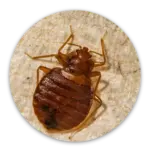
Bed bugs are oval brownish insects. They live off feeding on blood. Adults are normally the size of an apple seed but do swell and become reddish in color after feeding. Bed bugs do not fly but can move quickly across floors, walls, ceilings, and furniture. Immature bed bugs (nymphs) shed their skin for each life cycle. They require a blood meal before each shedding. In favorable conditions nymphs can become adults in as little as one month. A female bed bug can lay hundreds of eggs in her lifetime making bed bugs very quick at increasing population. You can bring bed bugs into your home in many different ways. Luggage, cloths, used furniture, guests, and more. Bed bugs don’t have colonies or hives but do tend to live in groups in hiding places. Most common hiding places are box spring, mattress, and bed frame. Bed bugs can spread to behind baseboards, picture frames, couches, dressers, nightstands, and any other crevices in home. Bed bugs live solely on blood so having them in your home is not evidence of a dirty home. Bed bugs are active mainly at night while you are sleeping. Their bites are painless at first but most of the time (not always) will leave a welt and itch. Bites can be anywhere on the body.

The human fascination with this insect began thousands of years ago when people discovered what wonderfully tasty stuff honey is!
Honeybees have a bright color pattern to warn potential predators (or honey thieves!) that they have a weapon to defend themselves. Their weapon is a modified ovipositor (egg-laying tube). This is combined with a venom gland to create a stinger (formally known as an aculeus) located at the end of the abdomen. Because the stinger is modified from a structure found only in females, male bees cannot sting. When the hive is threatened, honeybees will swarm out and attack with their stingers to drive the enemy away.
Relocation
Whenever possible, RAM Pest prefers to relocate a bee hive or swarm. We work with Priority Pollination here in Yuma to re home the bees. Once we have removed them, we take them to Priority Pollination where they give them a new home.
Extermination
When bees are in an inaccessible area RAM Pest does offer the option of terminating the bees. However, this is a last resort as we prefer to relocate when at all possible.

Flying insects can range from flies and moths, to bees and wasps.
Some of the most common ones causing you to call for service are flies. Outside around patios you will find filth flies. The flies annoying you while your grilling or eating outside. Inside fungus flies and drain flies are common. These are often mistaken for gnats. If you have fungus or drain flies, check for dirty drains, (garbage disposal) rotted fruit, and potted plants. These are some of the most common areas for these flies to reproduce.
Bees are another very common flying insect we get calls about. Bees are very crucial to our local farms here in Yuma, and around the world. Whenever possible we like relocate the bees instead of exterminating them. We are able to relocate them to a local pollination company that then uses them for pollination of our local farm fields. If bees are located in an inaccessible area, we can exterminate them if relocation is not an option.

Did you know pigeons were used as communication transporters during war? Some pigeons were even awarded honors for their role in a war. Pigeons are considered very smart and fast strong fliers.
If you ask a homeowner, they will tell you it’s a pesky bird making a mess on their roof. In today’s world this is the most common answer. We have many homes and business here in Yuma that pigeons are calling home. The problem with pigeons comes with their feces. The droppings can cause a mess on roof, walk ways, and down the walls. Left alone to do their thing can lead to damage and possible health issues.
We have seen roof leaks due to pigeon droppings not allowing rain to drain off roof properly. That’s a small problem compared to a gas station canopy collapsing due to the weight of so much pigeon feces.
RAM Pest has solutions to your pigeon problems whether a home or business.
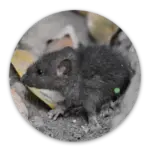
The two most common rodents in structures we have in Yuma are house mice and roof rats.
House mice – House mice are found all throughout the U.S. House mice are small, characteristically having a pointed snout, large rounded ears, and a long hairy tail. A female can have up to a dozen babies every three weeks! Can quickly cause a big problem in a structure.
Roof rat – Roof rats are a dark brown and black intermixed (grey) with a light-colored underside. They are long and thin. Up to 18” with tail. Have a scaly tail, large ears and eyes. The tail of a roof rat is almost always longer then the body. A female can give birth to up to 40 babies in her lifetime.
Both house mice and roof rats are carriers of diseases. Both can cause allergy problems due to urine and feces. They contaminate every service they walk on with urine and feces, as well as any pathogens they may have on their body. Neither of these are rodents you want in your home.
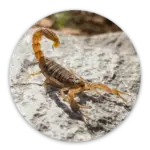
Arizona is home to many species of scorpion. All of which are nocturnal. Each very in size and venom potency.
The most commonly talked about scorpion in Arizona is the bark scorpion. About 2-3 inches in length, eat crickets, roaches, and other small insects. Give birth to live young, 25-35 at a time. The bark scorpion is the most venomous scorpion found in AZ. Although rarely will a sting lead to a fatality.
The giant hairy scorpion is the largest scorpion in Arizona. Can be more then 4 inches long. Very distinct by its size and a body covered in fine hair. This scorpion can scare people just by its large size.
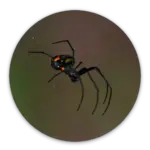
There are a wide range of spiders in Yuma. Too many to cover them all. Here are some of the common ones.
Wolf spider
A wolf spider can be large and hairy, causing alarm in most people. This spider is an active hunting spider. It does not build webs and wait, it uses its quick speed to catch its prey. This is part of the reason its seen often by humans. The wolf spider is not an aggressive spider, will do its best to run from you. It is venomous and can bite. This spider overall is not a large threat.
Brown recluse (Arizona recluse)
The brown recluse is often identified by a dark brown violin shape on its back. It prefers to home in warm, dry, dark areas. A bite from these spiders is usually due to when it feels trapped. When you put on a shoe, glove, pick up a box, that a recluse chose as home. These bites can sometimes take a few hours to develop, or can cause immediate pain in bite area. The severity of the bite all depends on reaction. This bite can continue to cause problems for weeks. We recommend medical attention if bitten by one of these spiders.
Black widow spider
This spider is very common around buildings. The female is the most commonly seen spider. She is black with a red hour glass shape on bottom of her abdomen. She will make webs typically lower to the ground and wait for prey to become stuck. Black widows are venomous and bites can be painful. Very rarely are bites fatal. She is normally tucked away and only bites when disturbed.
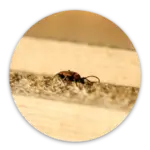
All RAM Pest Management’s termite technicians have state issued termite application licenses. You will never have a non-licensed technician preform your treatment. Each treatment will vary depending on where termites are located. This is why an inspection is so important. We need to be able to proscribe the right treatment for you. All our technicians have been trained to perform the best treatment in the least evasive way. Ram Pest always strives to give quality service the customer will be happy with.
Termite Control
Inspections
Concerned about termites?
Our termite inspectors are licensed and certified to your home for termite activity. Our inspectors are trained in the knowledge of products and treatment methods. If termites are found they are prepared to give you options to help solve your termite problem.
Buying a home? Selling a Home? Realtor?
During the sale of most homes a wood report is needed. (WDIIR / Wood Destroying Insect Inspection Report)
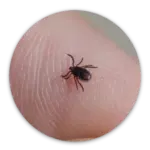
The tick seen most in Yuma is the brown dog tick. The brown dog tick prefers dogs as its host. Typically attaching around the ears and between the toes. Although it can be found anywhere on the body. Its uncommon for these ticks to bite humans but will in absence of a canine host.
These ticks are unique in the fact that they can complete their entire lifecycle indoors. The brown dog tick can thrive inside your home. It can go from an egg to a breeding adult without ever going outside.
Treatment option should always include treating exterior as well as interior.
RAM Pest Management is a reputable and reliable pest control company proudly serving the Yuma, AZ area. As a 100% locally owned business, we bring more than 100 years of combined industry experience to ensure effective pest management solutions.